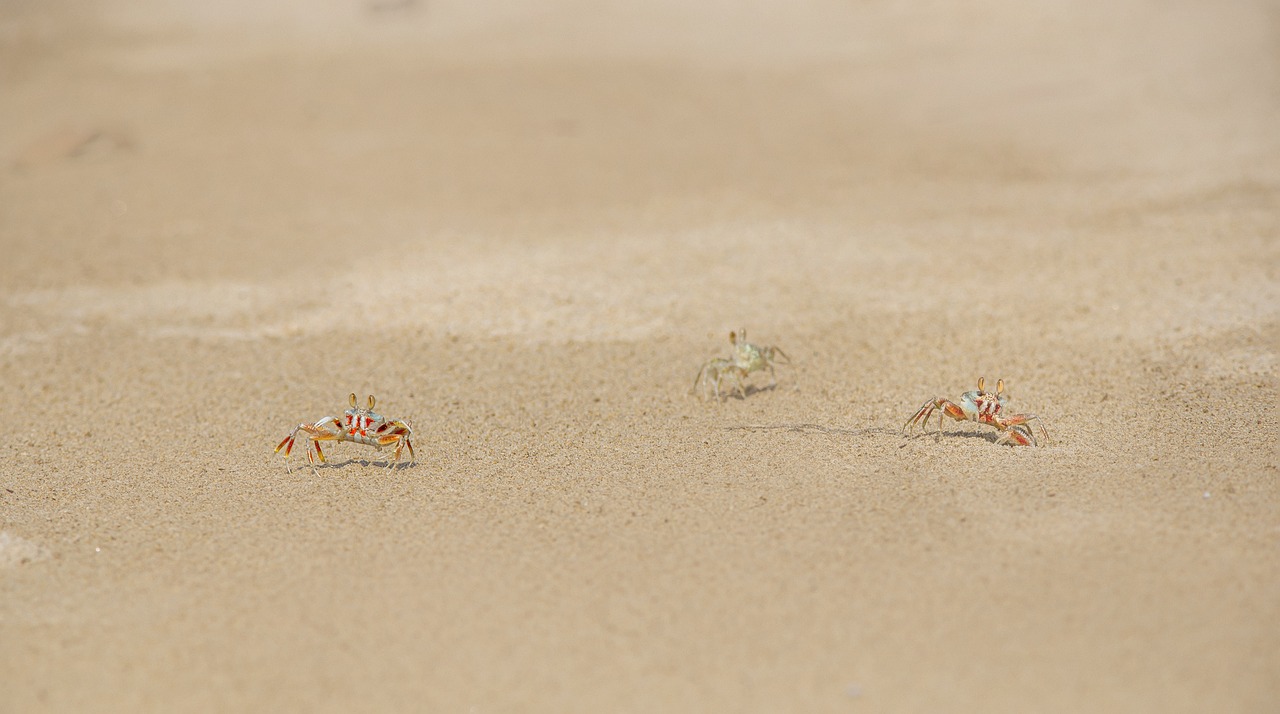The white crabs often seen on Thailand’s beach sands are commonly known as Ghost Crabs (genus Ocypode). These fascinating creatures are named for their pale, almost translucent appearance, which allows them to blend seamlessly with the sandy environment. Here’s an overview of these intriguing beach inhabitants:
Description
- Appearance: Ghost Crabs are typically light-colored, ranging from white to a pale yellow or sandy hue, which provides excellent camouflage against the beach sand. They have a square-shaped body with long, spindly legs and prominent stalked eyes that give them a wide field of vision.
- Size: They usually measure about 2.5 to 5 centimeters in width, though their long legs can make them appear larger.
Behavior and Ecology
- Activity: Ghost Crabs are primarily nocturnal, emerging from their burrows at night to forage for food. During the day, they can sometimes be seen scurrying quickly across the sand but usually retreat to their burrows to avoid predators and the heat.
- Diet: They are omnivorous scavengers, feeding on a variety of items such as detritus, small invertebrates, algae, and even carrion. They use their claws to catch prey and tear apart food.
- Burrowing: Ghost Crabs are excellent diggers, creating burrows that can be up to a meter deep. These burrows provide protection from predators and extreme temperatures. The entrance to their burrows is often surrounded by a small mound of sand.
- Speed: They are incredibly fast and can move quickly across the sand to escape threats. Their speed and ability to quickly disappear into their burrows make them difficult for predators to catch.
Habitat
- Distribution: Ghost Crabs are found on sandy beaches worldwide, including the beaches of Thailand. They are common along the coastline in tropical and subtropical regions.
- Preferred Environment: They prefer the intertidal zone of sandy beaches, where they can easily burrow and find food. They are often seen near the high tide line.
Reproduction
- Mating: Ghost Crabs mate seasonally, with males attracting females by performing courtship displays and building elaborate burrows.
- Eggs: Females carry fertilized eggs on their abdomen until they hatch, at which point the larvae are released into the ocean to develop.
Conservation
- Threats: While Ghost Crabs are not currently considered endangered, they do face threats from habitat destruction, pollution, and human activity on beaches. Coastal development and recreational beach activities can disrupt their burrows and reduce available habitat.
- Conservation Efforts: Efforts to protect beach ecosystems, including reducing pollution and managing human activities on beaches, can help preserve Ghost Crab populations.
Observing Ghost Crabs
- Best Times: The best time to observe Ghost Crabs is at dusk or night when they are most active. During the day, look for their burrows and tracks in the sand.
- Watching Tips: Approach quietly and slowly to avoid startling them. Using a flashlight with a red filter at night can help you observe them without causing too much disturbance.
Ghost Crabs are a delightful and vital part of the beach ecosystem, contributing to the health of sandy shorelines by aerating the sand and consuming organic debris. Observing these agile and elusive creatures can be a fascinating experience for beachgoers and nature enthusiasts alike.
Visited 455 times, 15 visit(s) today
Views: 506
Subscribe to the newsletter:
